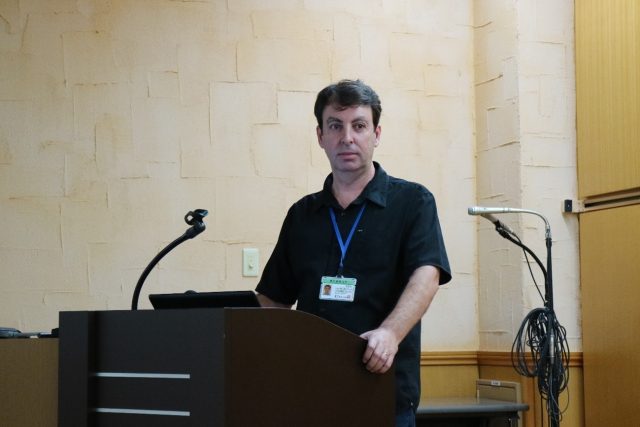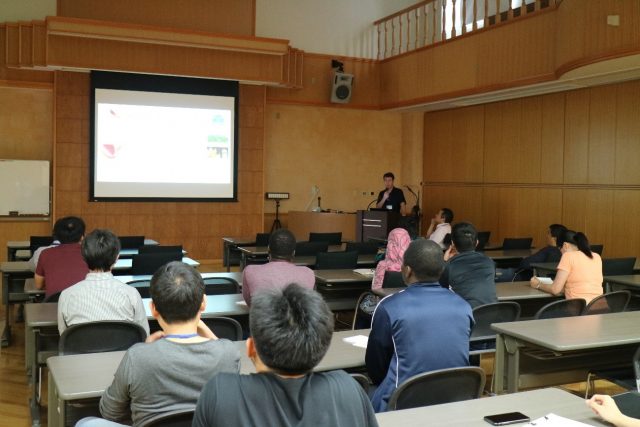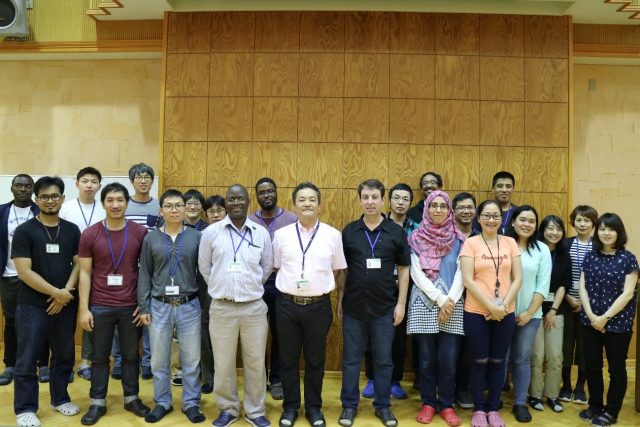ブラジル国 オズワルド・クルス財団(Fiocruz)Leonardo J. M. Carvalho教授(第1回JICA研修員)が、約3ヶ月間(2019年5月7日~7月30日)本研究センターでの研究活動を終えました。 帰国するにあたり、7月17日(水)にポスドク、大学院生を対象とした特別セミナー「Recovery of vascular function in cerebral malaria」を開催し、本セミナーは、若手研究者等と活発な議論を交わす貴重な機会となりました。
今後もOIEの活動等を通じて、Leonardo J. M. Carvalho教授との共同研究のさらなる発展が期待されます。
「Recovery of vascular function in cerebral malaria」
Malaria affects over 200 million people and kills nearly half a million every year, particularly children under 5 years. The most lethal form of the disease is cerebral malaria (CM), a severe complication of Plasmodium falciparum infections. Intravenous artesunate is the mainstay treatment for CM, but still over 20% of treated patients die, and 25% of the survivors may develop neurological sequelae. Therefore, adjunctive therapies are urgently needed for CM. CM is characterized by vascular congestion and blockade by parasitized red blood cells and by vascular dysfunction. We make use of the experimental CM (ECM) model of P. berghei infection in C57BL/6 mice to study cerebrovascular pathogenesis and therapeutics of this malaria complication. Mice with ECM shows a sharp decrease in cerebral blood flow (CBF) at the time of neurological manifestation, as shown by intravital microscopy. This is due in part to a process of widespread vasoconstriction, which restricts blood flow to the brain. As a consequence, mice with ECM show marked decreases in arteriolar, tissue and venular oxygen tensions in the brain. Administration of exogenous nitric oxide (NO), a key endogenous regulator of vascular tone, partially prevents the occurrence of vasoconstriction, decreases inflammation and vascular plugging by adherent leukocytes and increase survival. More importantly, administration of the NO-donor glyceryl trinitrate as adjuvant therapy in combination with artemether to mice with late stage ECM rapidly restores baseline cerebrovascular diameters and improve survival. Mice with ECM show impaired pial vessel responses to acethylcholine and N-methyl-D-aspartate, indicating that NO synthases (NOS) are dysfunctional. However, constricted pial vessels of mice with ECM dilate in response to L-arginine, indicating that NOS dysfunction is related to substrate shortage. Systemic administration of L-arginine, as well as modulators of soluble guanylate cyclase, in combination with artemether also helps recovering cerebrovascular tone and blood flow. Finally, mice with ECM show a levels of vasoactive arachidonic acid metabolites in the brain compatible with a vasoconstrictor profile, and pharmacological inhibition of thromboxane synthase results in increased cerebral blood flow. In summary, these data indicate that recovery of vascular function in cerebral malaria has potential for therapy.
 Leonardo J. M. Carvalho教授
Leonardo J. M. Carvalho教授

講義の様子

集合写真
